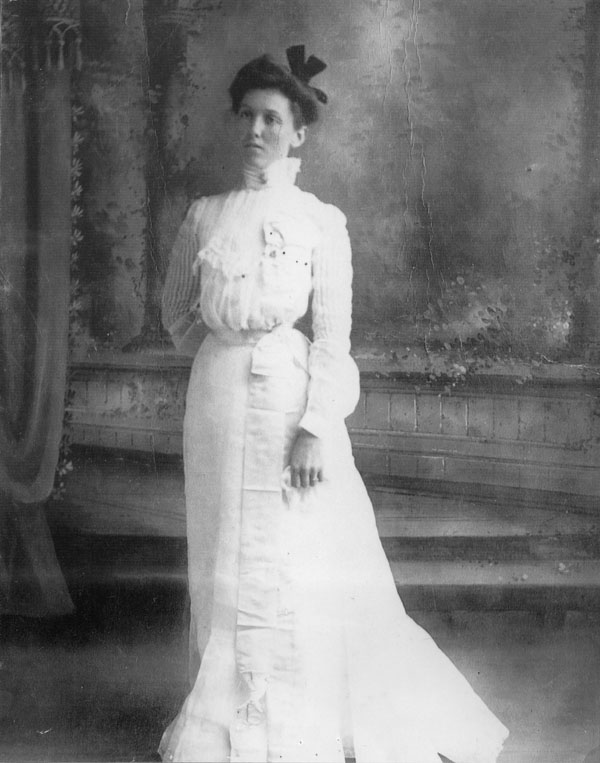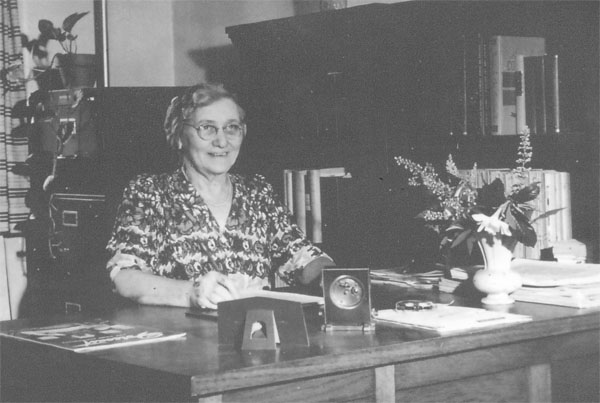By |
Mrs. May Lee Denham, whose career teaching at Central schools and at the University Lab School lasted 52 years
(Excerpted from a speech made by May Lee Denham on the Tercentenary Celebration of the founding of high schools in America, 1935, strongly resonating with the same passion as that of those who have worked so hard for Central to have its own school system. The history of Central and its schools is a history of individual commitment to education, unified vision for the welfare of the children, and the sacrifice of time, abilities, money and resources to create the very best opportunities for those children, extending over 150 years. On our 5 year anniversary, it is good to remember where we come from and why we do what we do. )
… As time passed on, people began to want longer school terms, so they supplemented the public sessions by private schools, extending the sessions to ten months. Prominent among the private teachers who contributed largely to educational progress and standards were Mrs. Amelia Landry, Miss May Heroman, Mrs. Olive Nesbit, Mrs. Anna M. Joor, and Mr. O.M. Lee….
Mr. Lee (May Lee Denham’s father – ed.) conducted a private school for several years on the Sullivan Property that served the needs of that community. So closely interwoven with the school history of this ward is the Sullivan family that this story will not be complete without some mention of their part in the educational life of the community. At no time has the Sullivan estate, originally consisting of some 2000 acres secured under the Spanish grant, been without a school somewhere on its premises. (Significantly, Mrs. Lee Rome, a descendant of the Sullivan Family, has been one of those whose efforts led to the creation of Central Community Schools – ed.) Four specific times has a site on this property been set aside for school purposes. Earliest of these sites, where nearly all the teachers of the early group mentioned above taught, was a large log house with its ample mud chimney and wide open fireplace and a dirt floor made hard by a composition principally of ashes and salt mixed with earth by means of which early settlers made a sort of mortar or cement. Nearby the house was the old square shaped, dug well with its oaken bucket and graceful sweep long since made famous in American literature. Remains of the well and the mound from the old dirt chimney may still be seen near the side of the road about a mile from the new school (built in 1930-ed.). As time passed and the estate was divided for heirs of the family to establish homes of their own, this school was abandoned and another site chosen. In turn, this school gave way to another which was built on a third site chosen for the convenience of the community which had grown considerably. The present new brick building is the fourth of this series of schools and it, too, is built on Sullivan land, the site having been donated by Mr. William Sullivan Edwards, a grandson of the original owner of the Sullivan estate.
These early private schools served the purpose of giving the people of this section the best educational advantage procurable at that time until the parish could come out from under the depression of Reconstruction days. It is much to the credit of the citizens of this Ward that they thus placed such an estimate upon the value of education that they always supported any move that made for better enrichment of life. This wholesome attitude and high standard set by former generations has made it possible for this generation to achieve its present success.
The foundation thus laid soon paved the way for the period in public school history that may be called the one-room school period, dating from about 1877-1900. During this period, when the one-room school was at its height, the Tenth Ward proudly boasted six such schools, each in an outstanding community and each contributing materially to the progress and advancement of the ward. Most of these schools developed into two-room schools before the era of consolidation, which began in about 1900, to better be served by a larger school center. These well- known schools were Bay Ridge, Blackwater, Central, Fifteen Mile (also known as Magnolia School, located on Greenwell Springs Road on property donated by Mr. R.T. Devall about 15 miles from Baton Rouge – ed.), Frenchtown (located at Beaver Creek and Frenchtown Roads – ed.) , and Woodland (located where Zoar Baptist Church is today – ed.) .
In 1884, Mr. O.M. Lee, with his family, returned to this community and immediately began to organize the school now known as Central which he taught for several years. Mr. Dan Sullivan gave the site on the north-east corner of his land about a mile from the present school for the first Central school building. (The Sullivan School was called the Settlement School prior to 1900 and was at the corner of Sullivan and Wax Roads- ed.) This donation of land carried with it the usual proviso that the land revert to the owner or his estate when it should cease to be used for a school. But it carried also an unusual stipulation that at no time should the building be used for any political or religious purposes or any gatherings whatsoever other than school affairs. The purpose of this proviso was protection of school property and respect for school building which had frequently been abused by use for other purposes. One of the uses to which many school buildings had been subjected was a voting place on election days. Elections of reconstruction days and the period immediately following were not always the orderly affairs they are today.
Some years later, the school was moved to a more convenient spot on the same property. Mr. Sullivan again gave an acre of land with the same stipulations as before. There the school grew rapidly and developed into a graded school with several teachers. As growth was so rapid and the future development so promising, the citizens of the community, led by Dr. W.D. Harelson, president of the School Board, began to talk of consolidation. Soon the plan was completed and, in 1904, twenty years after the first Central school was built, the schools of Frenchtown and Woodland were combined with Central, and East Baton Rouge had her first consolidated school and ran her first school vans. The intersection of the Sullivan (originally Settlement) and Canal (now Hooper) Roads was selected as the best location for the new school and Central made its third move, again to be built on Sullivan property, donated this time by Mr. W.S. Edwards, a nephew of Mr. Dan Sullivan and grandson of the original owner as already stated. Consolidation took place under the able superintendency of the late Mr. H.K. Strickland and improvement and progress has been steady and unbroken ever since.
Upon the death of Dr. Harelson, Mr. W.P. Sullivan became the school board member in his place. Through his influence, the school continued on the path of progress. Succeeding Mr. Sullivan, Mr. Harney P. Sides became a member of the school board, which office he has held for nearly twenty-five years…. Mr. Strickland was followed by Mr. S.M. Hughes who cooperated with Mr. Sides in advancing the interests of the school. It was during the superintendency of Mr. Hughes that the Central community built a home for its teachers and East Baton Rouge had her first teacherage (located next to the present Masonic Lodge – ed.).
….In December of 1929 the citizens of the community voted a $40,000 bond issue to which the school board added $10,000. The result of this effort is a one-story brick building, modern in every respect, adequate for the needs of the school children in this section for many years to come (this building wasn’t torn down till the “new” high school was built in the 1970’s. Bricks from this building were used to create the present Central High School sign-ed.)….When this new building was dedicated in October, 1930, East Baton Rouge had her first rural brick school building. Shortly before this the first motorized school van service in the state was inaugurated at Central. There are now 10 motorized vans operating to and from Central which has 12 teachers and over 400 pupils.
The name “Central” was given to the school by its founder, Mr. Lee, who said at the time that, since this community was the center of the ward, one day in the years to come somewhere in this neighborhood this school would stand, the only school in the ward, enlarged sufficient to meet the needs of all the children in the community. He furthermore predicted that a system of good roads would be constructed that would enable the parish to transport the pupils to the school. This prophecy of 1884 now, in 1934, after fifty years is more than fulfilled. The people of the Tenth Ward may justly be proud of their educational achievement.
(Mrs. Denham finished with this inspiring statement which could easily apply to our community today – ed)
It is not of mushroom growth. It has not sprung up overnight. It is a result of coordinate effort on the part of many working through the years. It is an opportunity and heritage left to the youth of this community by their elders who have lovingly placed in it some of the consecration of their own lives. To the young people of the school: the challenge is yours to go on.
Many thanks to the Historical Society of Central and Vickie Carney for preserving this speech.
The O.M. Lee Home, on Blackwater Road, still stands with its gingerbread trim and large front porch beautifully preserved. It is no longer in the Lee family.
Mrs. Denham at her retirement in 1948





3 Comments